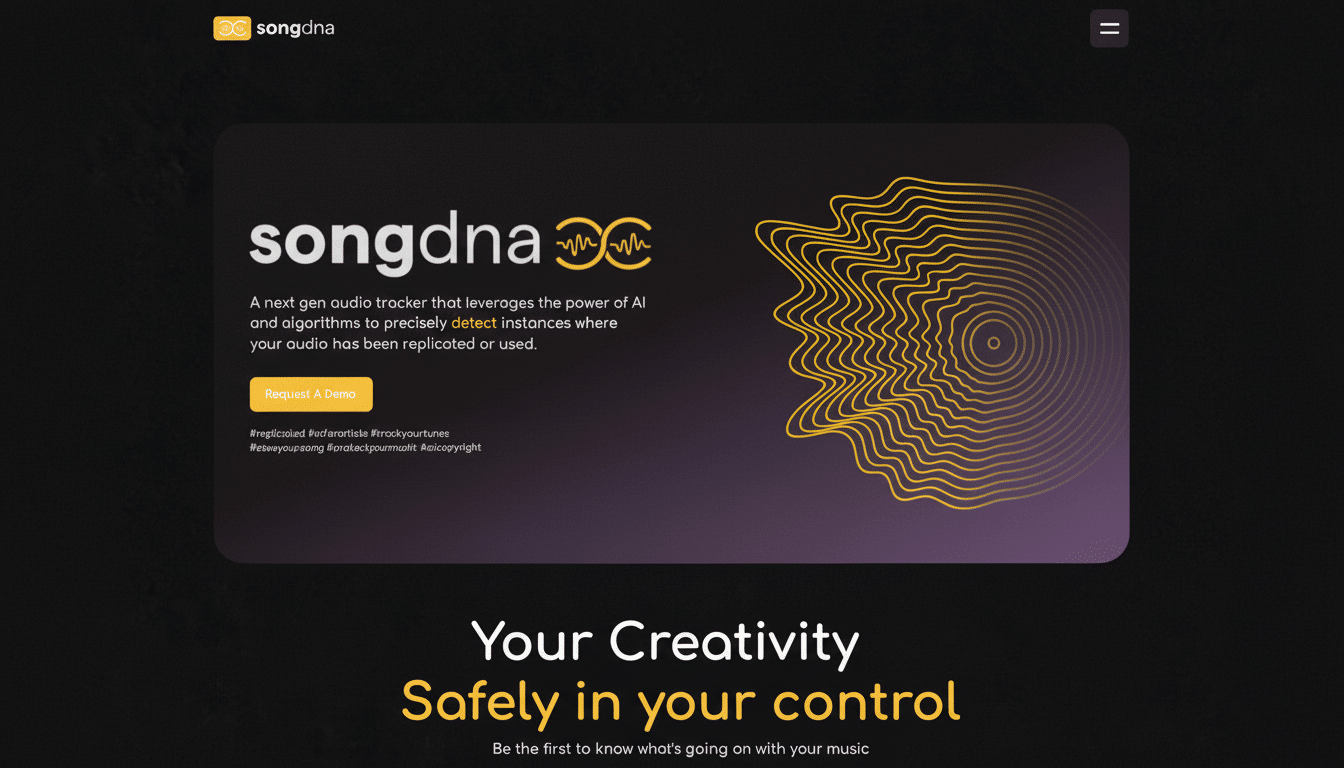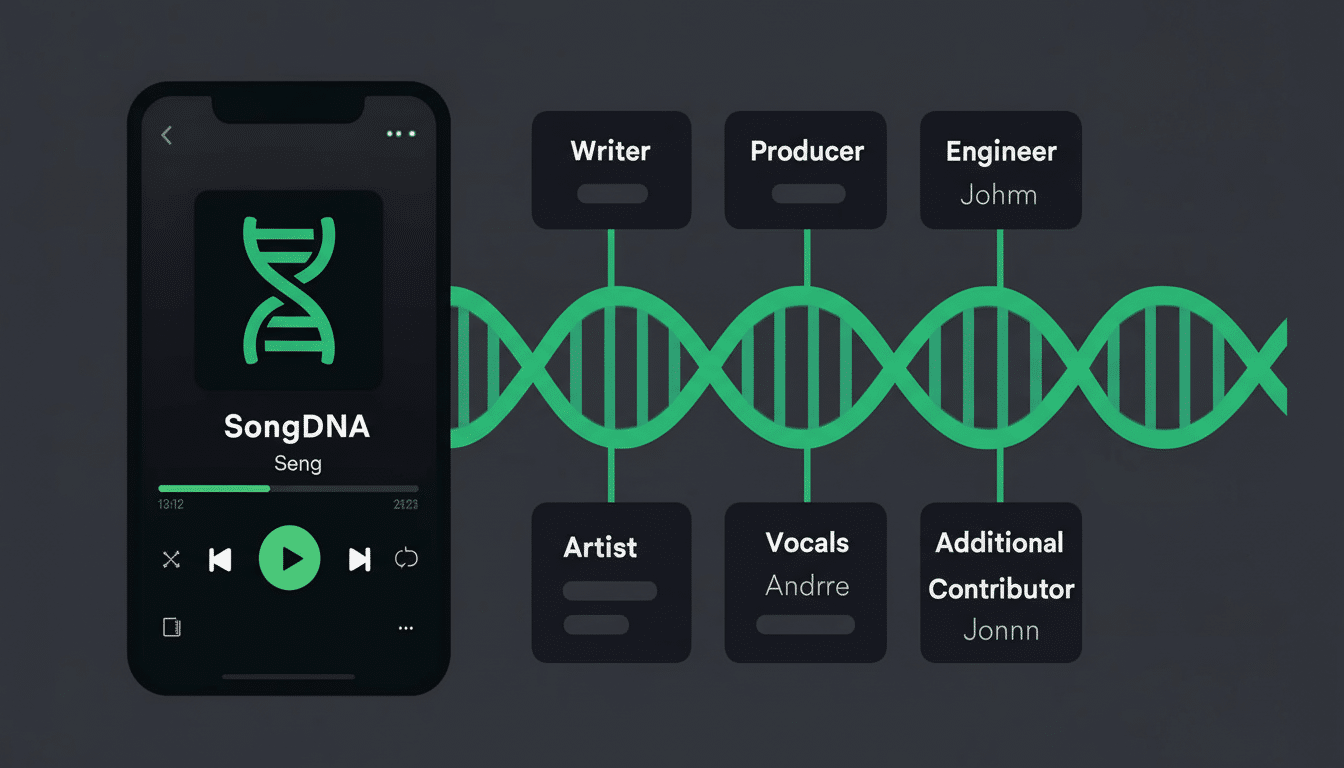It looks like Spotify is building a way to explore music about people, not just about songs or playlists. A feature in the app called SongDNA, discovered by popular reverse engineer Jane Manchun Wong and later confirmed to TechCrunch with a screenshot posted by technologist Chris Messina, reveals in-depth credits for a track that are visually laid out, offering details about the writers and producers as well as who produces and engineers, sings or raps on a song, and other contributing artists.
Early screenshots, created from code strings, display a browsable view of a song’s contributors, and connections that allow listeners to go from one person’s role in the work to their larger catalog.

References to SongDNA were also removed from new builds of the app soon after its existence was publicized on social platforms. In response to a question about the discovery, Spotify declined to comment on it but did not deny that the feature is being developed.
It’s a simple but powerful idea: Make credits into a discovery layer. One highlighted example from Wong: the artist Rei Ami, who’s best known for music tied to an animated project and appears across other recordings outside of the original cast track—demonstrating how a singular voice can find its way throughout various corners of the catalog.
Why Credits Are Important For Discovery
Music credits have long been buried in liner notes or scattered across databases. Bringing these people to the fore unleashes practical and cultural value. For fans, credits satisfy a mounting curiosity about who actually shape the sound — a feeling amplified by the ascent of behind‑the‑scenes authors on social platforms. Credits are a talent graph for industry vets: who’s produced for whom, what writers cluster around certain scenes, which engineers grasshoppered through the revolving door of breakthrough records.
There’s also a financial subtext. In the United States, the Mechanical Licensing Collective has repeatedly emphasized how metadata gaps can result in unmatchable or delayed royalties. DDEX and other standards bodies have promoted the RIN (Recording Information Notification) standard to include roles and identifier information at the time of creation. The Recording Academy’s Credits Due initiative also calls for accurate early data collection, so that contributors can be discovered and receive their due compensation.
How SongDNA Could Work to Boost Music Discovery
From the in‑app references, SongDNA seems to do three things:
- Centralize role-based credits
- Visualize the relationships between credited contributors
- Provide ways to quickly discover other work by each contributor
Picture tapping a drum engineer on a pop track and viewing their previous sessions; pivoting to a songwriter they regularly collaborate with, and on to a playlist of their most‑credited songs.
The “DNA” metaphor indicates a network view rather than a nested list that could give Spotify a fresh discovery surface beyond Home, Search, and its playlist‑and‑podcast personalized recommendations. It also suggests more detailed contributor profiles — perhaps with role tags (writer, mixer, mastering, VPs), major credits, and cross‑links to discographies. Whether those profiles will be verified or user‑editable remains an open question, and it will matter for trust.

Competition and Context in Music Credit Discovery
SongDNA would sit in a space where others have tried before. TIDAL’s interactive credits feature already allows users to explore songs by contributor role. Apple Music also introduced bigger credit displays, especially on classical and spatial audio releases. Beyond the streaming apps, Jaxsta works deals with labels and publishers for an authoritative credits database while MusicBrainz and Discogs serve up community‑led metadata.
Some have likened SongDNA to the Music Genome Project of Pandora. But the Genome measures qualities of songs — tempo, harmony, instrumentation — while SongDNA focuses on human beings and their relationships to one another (listen: “I Want Another Enema”). If Spotify can combine the two approaches in the future — traits and talent graphs together — it could make its recommendations even better and lift more of that “long tail” of lesser-known composers, writers, and session musicians.
The Metadata Hurdle Spotify Must Overcome at Scale
Rich credits are useless without good underlying data. Credits are frequently delivered late, piecemeal, or inconsistently formatted across labels and distributors. Aggregating authoritative roles, identifiers, and affiliations means ingesting data that complies with standards such as ISRC (recordings), ISWC (works), and IPI (creators), while resolving conflicts among them, which inevitably appear across sources.
Pushing SongDNA to the masses would require Spotify to develop confidence thresholds and clear attribution (ideally with source labeling, version history, and pathways for fixing the inevitable mistakes). It would go a long way toward preventing miscrediting and correctly identifying royalty sources if companies partnered with guardians of official data, or with permissible verified creator claims.
What It Means for Artists and Fans as SongDNA Evolves
For creators, SongDNA might become a silent yet mighty portfolio. A producer’s repeated fingerprints over hits would be too obvious. A growing songwriter’s circle could tip you to the Next Big Wave of collaborations. A&R teams and managers could scout using contributor lists instead of just charts.
For listeners, it’s a new discovery habit: follow your favorite mixing engineer or vocal arranger the way you would a star artist. In a services marketplace with more than half a billion people that stream every month, even tiny changes in how people explore music can meaningfully reallocate attention — and therefore payouts (to those who make records sound like they do).
Spotify has been slowly, steadfastly building context around music — songwriter pages, creator tools, AI‑powered discovery. If SongDNA is shipped more broadly, it will take that strategy a step further: by recognizing that in the era of streaming, credits are not only kudos, but also navigation. And as soon as listeners begin clicking on the names behind the songs, it will be difficult to return them to a reality in which those names were buried on liner notes.

